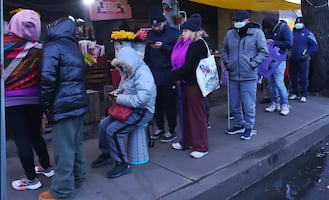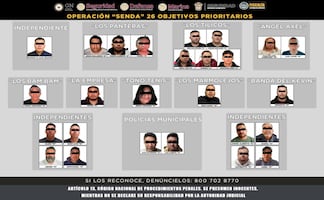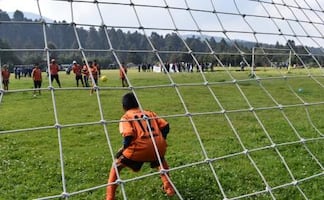Más Información

Sheinbaum exige a la ONU intervenir en conflicto entre EU y Venezuela; México podría ser “un punto de negociación”, dice

Detienen a 3 miembros de célula dedicada al uso de artefactos explosivos en Michoacán; los ligan a extorsiones
Edmond Locard
referred to microscopic remains as “ silent witnesses ”. As a pioneer of criminology, he developed one of the first scientific crime laboratories at the beginning of the twentieth century in Lyon , France . Locard unveiled the famous exchange principle , stating that every time someone or something makes contact with another person, place, or thing, it results in an exchange of physical materials.
For more than a century, the tools to discover the diminutive hints of a crime have evolved, and the aforementioned exchange principle was the basis for subsequent studies in subjects such as serology (the scientific study of serum and other bodily fluids), toxicology , and the study of DNA , among others.
However, our genetic material began to be used as a tool to solve crimes until the mid-1980s and obtaining genetic profiles has revolutionized the way in which crimes are investigated.
Yet, this is only a small piece of the possible tools that are used to solve a crime. A criminologist has an interdisciplinary background where diverse subjects of study converge, ranging from the legal to the human, passing, of course, through various fields of forensic science .
Luis Manuel Trejo Gómez
, criminology professor at the Autonomous University of Querétaro ( Universidad Autónoma de Querétaro abbreviated UAQ ), points out that one of the pillars of law enforcement is education and adds that one of the challenges in this area is to have the necessary inputs to carry out the practices that will become real scenarios later on.
Thus, Trejo Gómez assures that Mexico should promote the design and production of this type of supplies in the country since most of the materials used in the crime laboratories are imported.
"In the UAQ , we are developing some products under the university brand of ForensiUAQ ," he explains and he points out that the UAQ currently has seven products while several others are in the research phase.
According to Mexico's National Institute of Statistics and Geography ( Instituto Nacional de Estadística y Geografía abbreviated INEGI ), 60% of homicides in the country are committed with firearms and most of the aggressions are carried out with the so-called short weapons. Precisely, one of the first ForensiUAQ tools was a prototype ballistic recovery tube, a basic tool that analyzes firearms.This instrument is quoted at around MXN$120,000 .
"It was a very high expense so we talked to the people at the Development Center of the Faculty of Engineering and we realized that it was feasible to do it ourselves," said Trejo Gomez.
Among other designed tools, there is a cyanoacrylate camera , a forensic photography manual , and a comparison microscope .
He explains that the purpose of the ForensiUAQ project is to generate supplies for the forensic market not only at a more accessible cost but also adapted to the specific needs of the laws in Mexico. However, the project also seeks to provide tools, manuals and training courses to universities and professional institutions.
sg
Noticias según tus intereses
[Publicidad]
[Publicidad]












